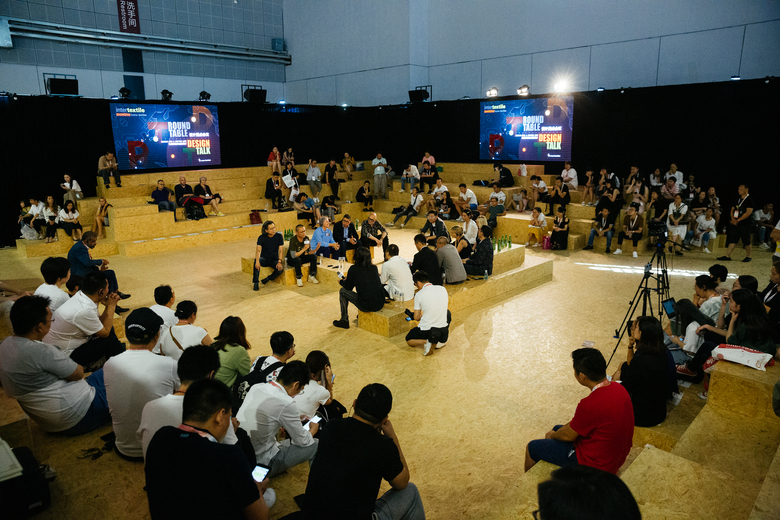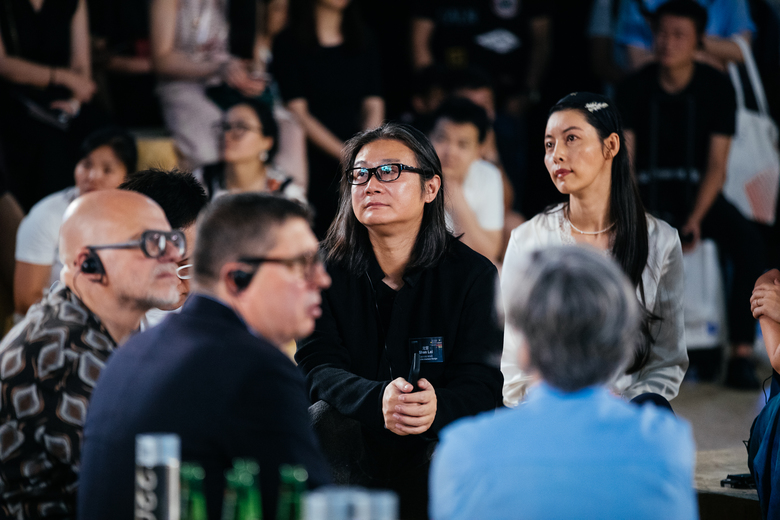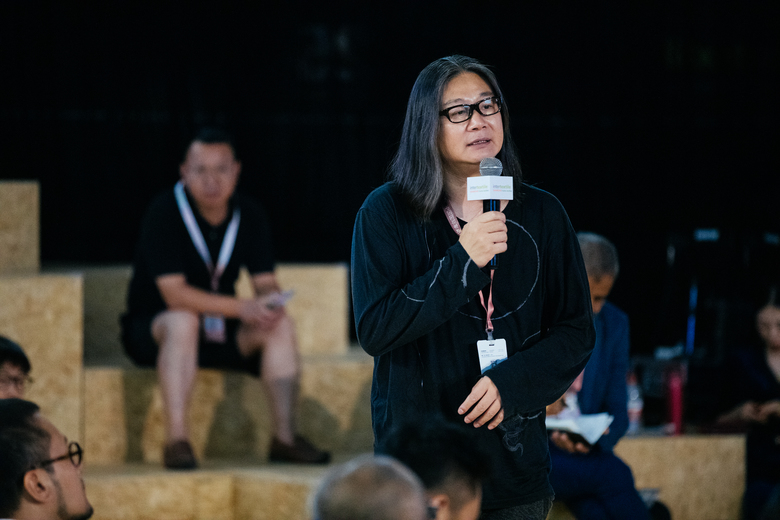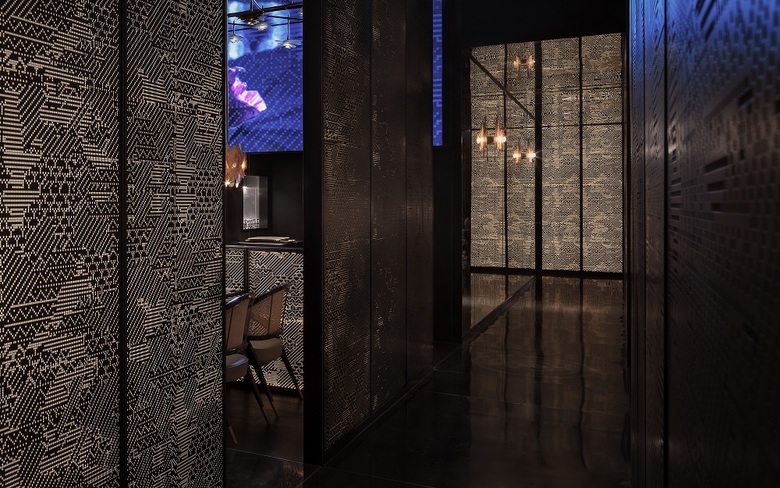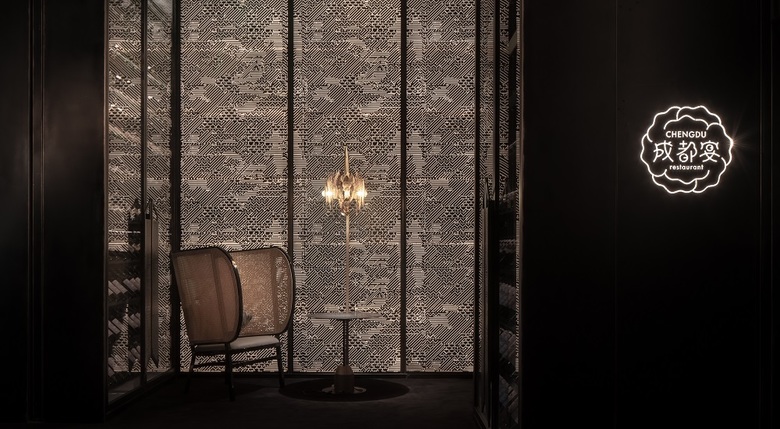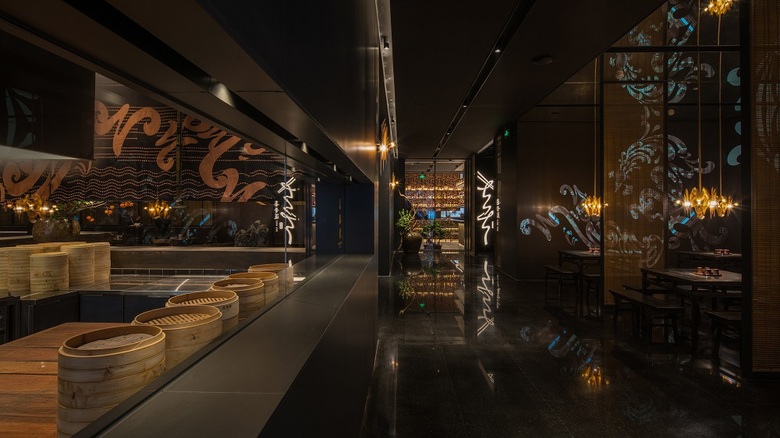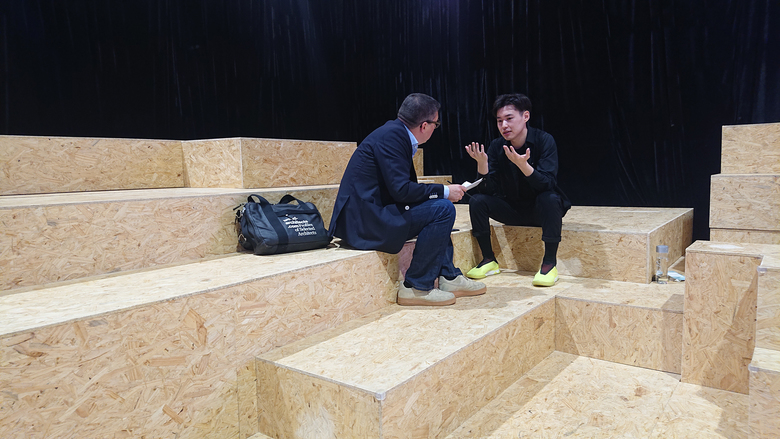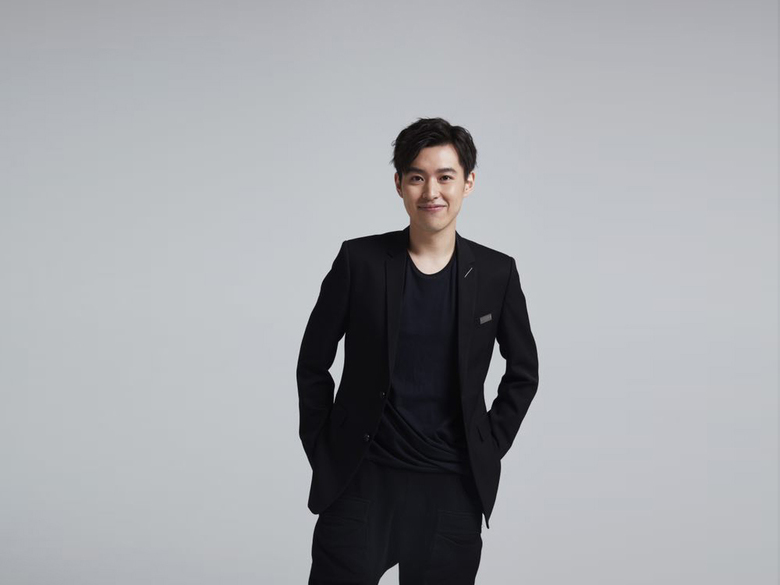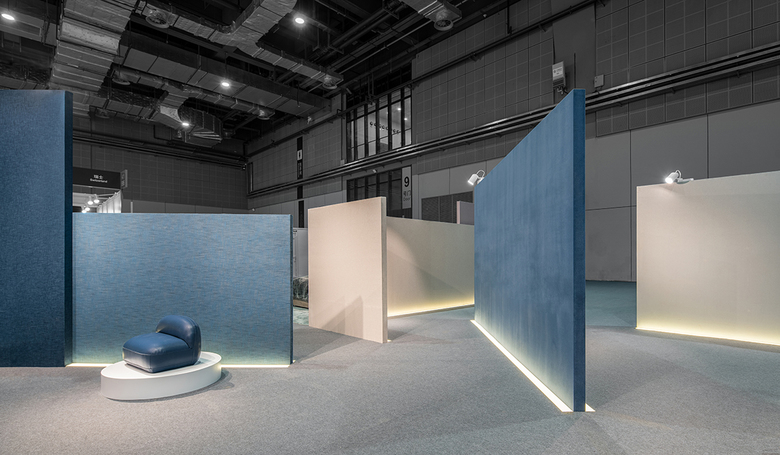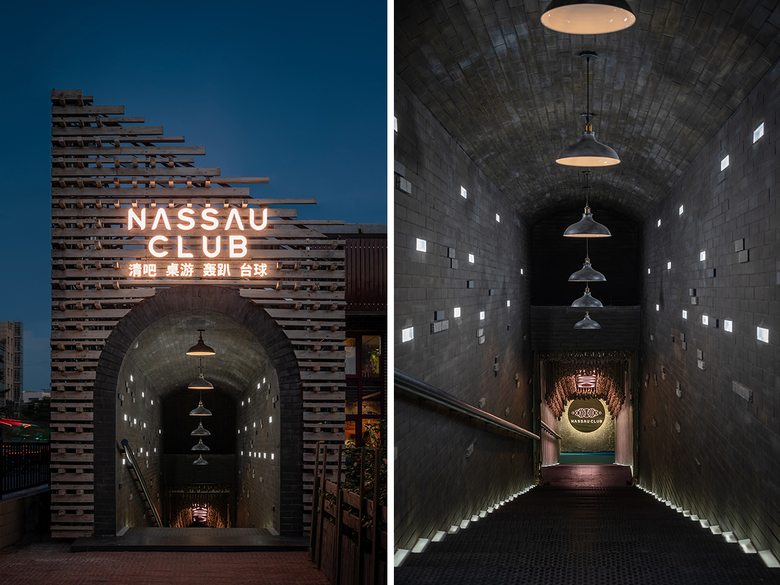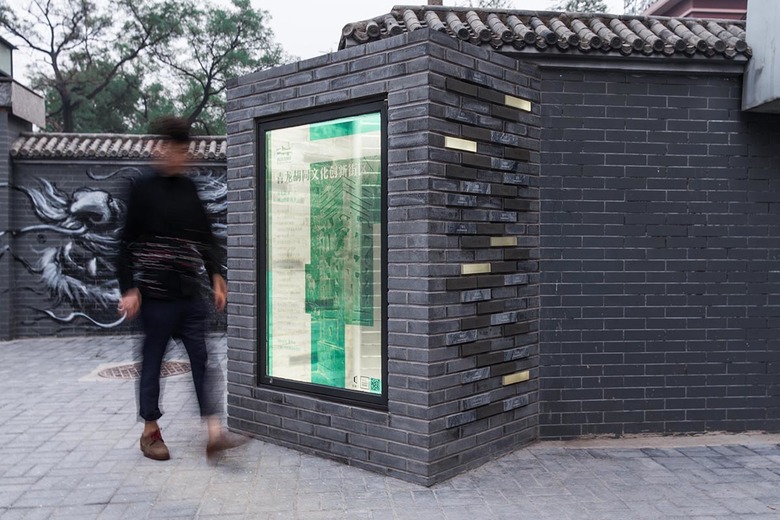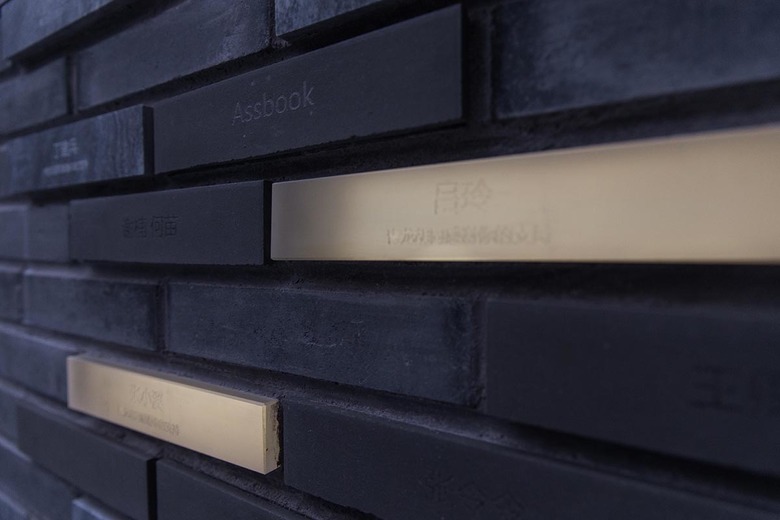Talking Design at ITSH
World-Architects
25. oktober 2019
Photo: Kevin Gu/World-Architects
The Intertextile Shanghai Home Textiles fair took place over four days in late August at the National Exhibition and Convention Center in Shanghai, China. World-Architects, working with Messe Frankfurt Hong Kong, organized some "Talks and Tours" at ITSH and also interviewed two highly talented Chinese interior designers: Shen Lei and Zhou You.
The three "Talks and Tours" — with Christina Biasi-von Berg, Peter Ippolito, and Monika Lepel — brought some expertise from outside of China to Shanghai, while the interviews worked the other way around, enabling our readers to learn about interior designers and the profession within China. Some insight on the first is available in "A focus on contract textiles" by Martina Metzner, and below are transcripts, lightly edited for length, of our interviews with Shen Lei and Zhou You.
Shen Lei
Shen Lei at ITSH (Photo: Kevin Gu/World-Architects)
You are very famous within China, but how do you explain yourself to an audience outside of China?I have practiced in the field of design for many years and feel more and more the importance of design. The difference between a “designer” and an “artist” is simply that the designer must work for function. But currently, we can design something like an artist.
What I mean is that design is as free as possible like art creation; I don't mean to say we use art in our design. I hope I could design whatever I want. Because we know the function very well already, we have much more freedom for the design afterwards. That’s what I would like to express: my design approach is much closer to art, not that we use some kind of art in my space.
Based on the Chinese market, you have lots of opportunities and can make different tries. Even facing a problem, people could accept it. It’s very special in China, in my opinion. China is the biggest market in the world, so, as a designer, we have lots of opportunities. If you treat design just as a job and make something similar every time, then you will find soon that the job is very boring.
Shen Lei at ITSH (Photo: Kevin Gu/World-Architects)
You're a professor as well. Would you say that design is a science?Maybe a kind of engineering. I would feel under pressure if I imagine design like a science. Design is much closer to art, because except for solving the problems of functions, like material, lighting, etc., the aesthetic issue can be judged good or bad.
No. I have a design office, which is maybe big abroad, but in China it is a small firm with around 50 people. I have my assistant and related engineers. I work only for the most pleasant phase: creation. In the beginning, after finishing my bachelor study in design, I was assigned to “Zhejiang Province Institute of Architectural Design and Research” in Hangzhou. I worked as an architect for six years. After earning money, I went abroad to Edinburgh to study. I already finished the phase as an engineer in China.
Shen Lei: Chengdu Yan (Photo: Mr. Pan Jie)
That leads me to my next question. If you had your wish of what to design, for whom, and where, what would it be?I am quite excited this year, because I am doing my favorite design in Suzhou, a very beautiful city in China. The project is a renovation of a 2,500 square-meter market in the old town. It makes me excited. My topic of the forum, “Design for favorite life,” comes from the market, because the market is my most frequently visited public place every week.
It relates to my life. I love cooking. I never cooked before studying in Edinburgh. After studying abroad, cooking gradually became my way of relaxing. Also visiting a market is relaxing for me. I am a person who works extremely efficiently. Every day I go to the office at 10am and leave around 3pm; then I will visit the market, cook, and enjoy my life.
I love designing. Design is my job but only part of my life. That's why I always have four or five holidays every year and fly all over the world to experience other lifestyles. Visiting a market is the fastest way to understand a city and it’s my source of inspiration.
Shen Lei: Chengdu Yan (Photo: Mr. Pan Jie)
You have a lot of experience, so are you interested in teaching and sharing your know-how outside of China?Teaching is a very important thing for me. But maybe I am not yet to the level of really teaching something. There are lots of forums or lectures in China. Every time I tell young designers, I can teach you the attitude of design but not the method of design.
I tell you an interesting story. There is an employee in my office whose father is a good friend. A while ago I had a drink with his father, who asked me: “My son is a cook, can he work as a designer?” He had not learned any design then, but afterwards he came to our office; he’s worked here four years already and makes renderings very well. If you throw someone who hasn’t learned design into a design environment, he will merge with the people around him and can help make the design as well.
The words come from Rodin, and the dean of design department in Edinburgh delivered them to us at the opening lecture when I was a bachelor student: "A designer should have a sensitive heart and skillful hands." Those words influenced me along the way. Sensitive heart means to catch the feeling of design and your clients. Skillful hands mean the goal of your design is not to draw but to make it reality.
Shen Lei: Feng Ling Ge (Photo: Mr. Pan Jie)
Zhou You
Zhou You with World-Architects CEO Renato Turri at ITSH (Photo: Kevin Gu/World-Architects)
You're a very dynamic and young designer. How would you explain yourself to an international audience?I’m a designer with my own studio. I got my bachelor degree in architecture at CAFA, the Central Academy of Fine Arts in Beijing, and then a master degree in design management at Pratt Institute in New York.
First of all, it’s my dream school. We all know they have the best interior design major in America. Also, it’s my dream city. I studied there for two years and I really wanted to stay there, but I also wanted to run my own business, so it was easier for me to come back here to run it, rather than in New York. I would have had to spend five or six years to adapt, but that was too long.
Yes, and I’m looking forward to maybe having another studio in New York.
Zhou You (Photo: Erik Ho)
Looking at your website there are vast areas of design. Can you explain what you do in these different areas?Yes, on our website there’s architecture, interior design, landscape design … I really want people to refer to me as a “designer” rather than an “architect.” For me, design is not only aesthetic and functional; design is arranging everything perfectly together. I have a lecture called “Invisible Design,” which means we have to do a lot of things behind design — related to design but not design. It’s a lot like the Design Management class I had at Pratt.
Right now we’re designing a suit, one that’s custom for me only. I was asked, “Do you really design suits?” To be honest, no, but I brought the concept, materials, and factors I want to use to a fashion designer.
Zhou You: Booth at ITSH (Photo: Zuo Peng)
You mentioned in a panel discussion yesterday that you have an interdisciplinary and holistic approach to design. Does the possibilities of working with different people drive your designs?Yes. People here ask me, “How do you cross the boundary across different majors?” But for me there are no boundaries, so I just cross it. I’ve always had a curiosity for different design majors, because I really like it. On some level they have the same essential traits. [RT] If you asked me, “Who is the best designer in the world today?” Everybody has their own answer, but my answer would always be Deng Xiaoping.
Deng Xiaoping designed the past 50 years for China, so we can have a good economic environment. He’s the best designer, but he didn’t graduate from a design school, he doesn’t know how to use Rhino or SketchUp. Also, when we talk about design — the word “design” came from “designate,” which has nothing to do with functional or aesthetic things.
Zhou You: Nassau Club (Photos: Cao Liang)
People often talk about positioning yourself, positioning your company. You do many things; do you think you’ll narrow your focus or stay open?No, it’s not necessary to narrow down. Like I said, I want people to call me a designer, and I also want to start a project myself, not just be the designer. When we finish that project I really want people to say, “He’s the founder, he’s the starter of this project.” I’m still a designer, but I started this project.
That’s a hard question. I would tell them about the project I just completed, where we used a lot of Chinese elements, like ink, bamboo, water, moonlight — very Chinese things. I feel like Western people really like that. Last year we did a small pop-up gallery for a Chinese ink brand — they sell ink and brush pens — that lasted seven days, was 28 square meters and was divided into four spaces. This project got Iconic Award, German Design Award, as well as IF and Red Dot awards.
Zhou You: New window at Qinglong Hutong, Beijing (Photo: Cao Liang)
If you had a wish, what would you design, for whom, and where?I want to design a public sports facility on the roof of some building in Shanghai. If it can be besides The Bund, it would be really exciting. If you have sports on the roof, there is the possibility of jumping into the river. [laughs] I want to use crowd-funding website to get the money and users to join us before we build it. I read about a project on Kickstarter in 2013 called +POOL, started by two architects and one designer: a simple floating swimming pool in the river of New York. They posted renderings on Kickstarter and it was really successful. That was a really good opportunity for those designers to transform themselves from designers to founders. But unfortunately the project hasn’t been done yet; it was hard for them to get it approved. It’s an exciting project but I think they went too far. We want to get the perfect project.
We actually used a similar concept in one of our projects before, a window display in Beijing.
Zhou You: New window at Qinglong Hutong, Beijing (Photo: Cao Liang)
Gerelateerde artikelen
-
Talking Design at ITSH
on 25-10-2019
